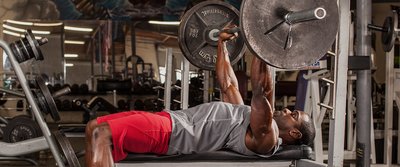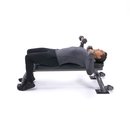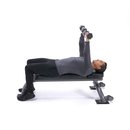If you came here expecting to read an article on how bench presses from various angles will build a monstrous chest, you're half right. There's no denying that heavy presses from the flat bench, incline, and decline positions are the basis of a solid mass-building chest routine, but doing that still isn't enough.
Pushing yourself hard, doing the right chest exercises, lifting heavy weights in the right reps-and-sets scheme—you can do all that and still not be maximizing your chest growth. The truth is, there are some monster tweaks you can implement to make your training even more effective.
It's time to abandon the expectation that doing everything "just right" is enough to bring up your pecs, because it isn't! If you can't coax muscle growth, you're going to have to force it. That requires getting into the gym and demanding more of each muscle fiber with a take-no-prisoners approach. But it's not just about training harder—no, you'll have to train smarter, as well.
Follow along as I take a basic nuts-and-bolts chest workout and supercharge it in ways you may never have considered. This will help you set a new standard on chest day and become a true monster.
1. Start with a heavy multijoint movement, then reduce your reps
Starting off with a multijoint (compound) exercise is a sound approach to any body-part routine. A multijoint movement enlists more than a single set of joints working in tandem, which therefore recruits a larger degree of muscle mass.
The compound exercise of choice for chest is the bench press. When you bench, both the elbow and shoulder joints work together, which is one reason bench presses are better muscle builders than single-joint fly movements; you can use substantially more weight.
Flat bench presses are arguably the best mass builders for chest because you can move the most weight over the longest range of motion, targeting the largest area of the muscle. You can make a case for dumbbell or barbell bench, depending on your preference. In fact, it's worth noting that EMG analysis shows no significant difference between the two with regard to muscle activation.1 If you've always preferred one over the other, I'd simply say that it's time to switch for a while.
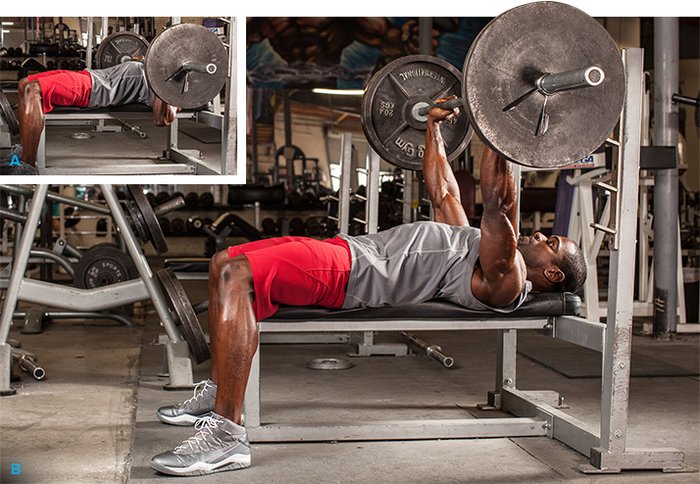
Flat bench press
Personally, I opt for dumbbells because they're far kinder to my shoulders, I feel a better contraction, and I can hit a longer range of motion. However, dumbbells are harder to control, so you'll have to sacrifice a little in terms of overall poundage.
Make It Monster: While the muscle-building rep range is often defined as 8-12 reps to failure using good form, you have an entire workout ahead to crush that hypertrophy zone. For now, while you're feeling fresh, it's time to push yourself a little harder.
Instead of choosing a weight that you can lift for 8 reps, grab a heavier load that you can do for just 6 reps. The idea here is to train in a zone that's slightly more beneficial for building strength, which will help you build a powerful base for future growth.
2. Press from multiple incline positions
The do-si-do of chest training usually entails inclines after flat bench presses. The problem is that with most fixed-bench incline barbell presses, the bench angle is often much too steep. The steeper the degree of incline, the more your front delts have to contribute to your incline presses. This pulls some of the stress from your pecs and, because your front delts are smaller muscles, may cause you to fatigue before you've really torched your chest.
One remedy: Grab an adjustable bench and use less of an incline. You may not be able to do your presses with a barbell, but you can hit dumbbell inclines or pop in to the Smith machine. An incline of about 30 degrees will put more stress on your upper-pec fibers and less on the front delts—exactly what you're looking for.
Make It Monster: To really fry your pecs, go ahead and use more than just a single incline position during your workout. The focus on multiple areas of the upper chest can increase overall development. Try the 15-degree inclined position, the 30, and even up to the 45.
Each position is a good candidate for building different areas of your upper chest. My recommendation: Do two sets at two modest incline positions.
3. Tweak your declines
Decline presses are the next stop on your chest-pressing tour. If you've done the first two exercises with free-weight moves, including a machine-based exercise here is perfectly fine because it reduces the need for using your stabilizer muscles—you just get in and push. Some machines, like Hammer Strength, allow each side to work independently, reducing the ability of a stronger side to cover up strength imbalances.
Make It Monster: First, adjust the seat so that the handles are about lower-pec level, which is your strongest position. But instead of doing 3-4 sets in this position, do two sets straight on, then two sets from each side of the bench—that is, sit on the bench sideways.
Now, with one hand stabilizing your torso on the seat, use the other to press completely across your body. This is called horizontal adduction of the pecs, and it allows for a stronger contraction than when you sit straight on. It's almost like adding a whole new exercise for your lower chest!
4. Fire up your flyes
Now that you've pressed everything from your chest, it's time for some isolation work. Many people opt for cable or dumbbell flyes, but these are actually easy to botch and turn into semi-presses when you're fatigued. This calls the shoulders into play when you really just want to fry your pecs. The solution? A pec-deck machine, which locks your elbows in the slightly bent position for the duration of the set, meaning you can do a better job isolating the chest.
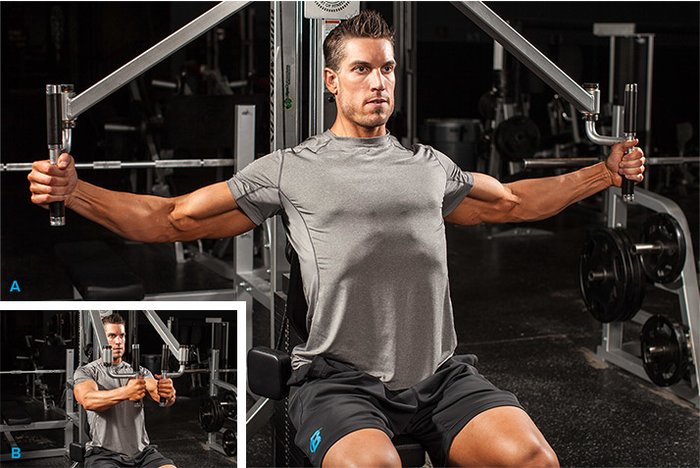
Pec-deck fly
Make It Monster: While 3 sets of 12 might be the standard protocol, why settle for ordinary? Light this one up with some intensity boosters. On the first set, hold the peak-contracted position for a full second, which makes you squeeze the muscle isometrically at the top. On your second set, do a full-range rep followed by a quarter (partial) rep at the top to really hit those inner pecs.
Both of those count as one rep. On your last set, do a normal set of 12 to failure, but instead of dropping the weight, do as many quarter reps at the top as you can, up to 20, 25, or even 30. That's how you blast those inner pecs!
5. Finish strong
Most ordinary lifters would be beat by now, but you're a monster, and you want to finish with a freakin' bang! Pull-overs are a nice way to wrap things up, but forget flat-bench pulls. Instead, you'll end with an incline pull-over, which puts your chest fibers under tension for a longer range of motion. This movement pattern is called shoulder extension (moving the upper arm rearward), and the pecs are a strong contributor to this action—especially with a strong mind-muscle connection.
Make It Monster: Sit back on a bench inclined about 45 degrees. Make sure you keep your arms nearly straight so you clear the top of the bench. Avoid bending and extending at the elbows to ensure this remains a single-joint movement.
Choose a weight you can barely do for 12 reps, but hold that last one for a full five seconds in the peak-contracted position, squeezing your chest hard before dropping the weight.
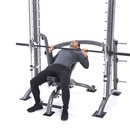
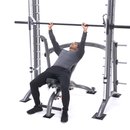
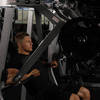

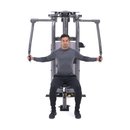
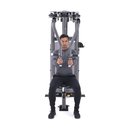
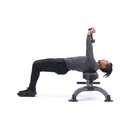
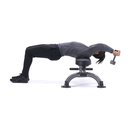
Drop any questions or your own tweaks to this routine in the comments section below! After that, psych yourself up and get ready to smash your chest in the gym. Anyone who sees you attack this workout will leave thinking, "Yes, monsters do exist."
References
- Welsch, E. A., Bird, M., & Mayhew, J. L. (2005). Electromyographic activity of the pectoralis major and anterior deltoid muscles during three upper-body lifts. The Journal of Strength & Conditioning Research, 19(2), 449-452.

